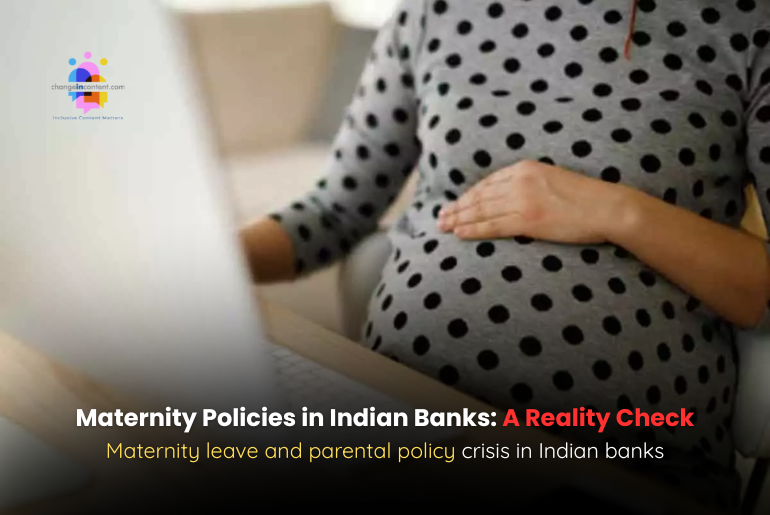In India’s banking sector, women employees face a paradox. Despite progressive maternity leave policies on paper, the ground reality tells a different story. The Maternity Benefit (Amendment) Act, 2017, mandates 26 weeks of paid leave and requires establishments with over 50 employees to provide crèche facilities. Yet, many female bankers encounter workplace biases, career stagnation, and inadequate childcare support. The maternity leave crisis in Indian banking is real, but not many are talking about it.
The disconnect between policy and practice
While the law provides for maternity benefits, implementation is inconsistent. Many banks, especially in rural and semi-urban areas, lack the mandated crèche facilities. That leaves mothers to seek unreliable or expensive alternatives. Moreover, returning mothers often face delayed promotions and inconvenient transfers, which undermine their career progression.
Workplace bias and casual sexism
A pervasive issue is the subtle yet damaging workplace bias. Comments like “She is about to give birth; now she will enjoy a long leave” reflect a culture that views maternity leave as a privilege rather than a right. Such attitudes lead to guilt and pressure among women employees, deterring them from utilising their full entitlements.
Maternity leave crisis in Indian banking: The work-life imbalance
Banking jobs demand long hours, and women are often expected to stay late or work on holidays. It adds to the stress of managing both professional and family responsibilities, adversely affecting their mental and physical health.
Global banks leading by example
In contrast, some global banks operating in India have set commendable examples. HSBC offers a monthly childcare allowance for nannies up to the child’s age of six, while Morgan Stanley reimburses cab rides for pregnant employees. Citigroup allows new mothers to work from home for up to a year post-maternity leave.
Conclusion: Bridging the gap between policy and reality
The ‘Maternity Leave Crisis in Indian Banking’ underscores the need for a cultural shift within the industry. Policies must be effectively implemented, and workplace attitudes need to evolve to genuinely support women. Only then can we ensure that maternity benefits serve their intended purpose. Doing so will empower women to balance their professional and personal lives without compromise.
The changeincontent perspective on the maternity leave crisis in Indian banking
At changeincontent, we have previously highlighted the importance of not just formulating but also effectively executing policies that support women in the workplace. The current scenario in Indian banking reflects a broader issue of policy inaction. Institutions must move beyond tokenism and foster environments where women can thrive professionally without sacrificing their roles as mothers.
Disclaimer: The views expressed in this article are based on the writer’s insights, supported by data and resources available both online and offline, as applicable. Changeincontent.com is committed to promoting inclusivity across all forms of content. We broadly define inclusivity as media, policies, law, and history—encompassing all elements that influence the lives of women and marginalised individuals. Our goal is to promote understanding and advocate for comprehensive inclusivity.


